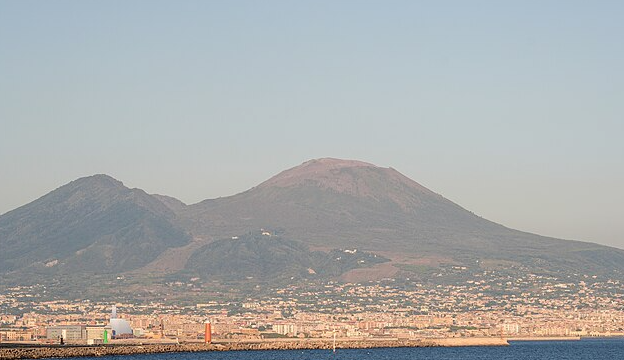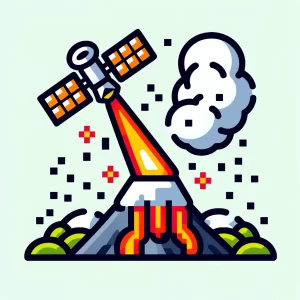
How Earthquakes Shook Pompeii:
Picture this: the ground beneath your feet begins to tremble as the towering Mt. Vesuvius rumbles to life, spewing ash and pumice into the sky. In the blink of an eye, the bustling city of Pompeii is engulfed in chaos. For centuries, we’ve known the tragic story of Pompeii’s destruction by the volcanic eruption in 79 CE. But what if I told you there’s more to the tale—an untold chapter that shifts the narrative of this infamous catastrophe? Recent findings suggest that earthquakes played a far more significant role in the destruction of Pompeii than we ever realized.
Shaking the Foundations: A New Discovery
While the story of Vesuvius’ fiery wrath has been well-documented, a recent excavation in Pompeii’s Insula dei Casti Amanti (House of the Chaste Lovers) uncovered a startling new clue. Archaeologists found the remains of two individuals trapped beneath a collapsed wall. This discovery shed light on an often-overlooked part of the disaster: the earthquakes that struck alongside the volcanic eruption.
Through a meticulous combination of archaeology, volcanology, and anthropology, researchers pieced together evidence of earthquake-induced damage that contributed to Pompeii’s destruction. This discovery challenges the long-held belief that the city’s devastation was solely due to volcanic ash and pyroclastic flows. Instead, it highlights how violent tremors during the eruption likely caused buildings to collapse, crushing people as they tried to seek shelter.
The Forgotten Tremors of Pompeii
Earthquakes are no strangers to volcanic eruptions. They often go hand-in-hand, with seismic activity sometimes preceding or occurring simultaneously with eruptions. Vesuvius was no exception. According to historical records, such as Pliny the Younger’s famous letters, tremors rocked the region for days before the eruption. However, the role these earthquakes played in the destruction of Pompeii remained largely speculative—until now.
During the excavation, scientists identified fractures in the masonry of buildings that pointed directly to earthquake damage. By comparing these findings with modern earthquake injury patterns, they concluded that seismic forces, not just volcanic ash, caused many structures to collapse. The skeletal remains found under the rubble showed signs of severe crush injuries akin to those seen in modern earthquake victims. This connection gives us a clearer picture of what truly happened during those final, terrifying hours in Pompeii.
The Scene of the Disaster: Human Lives Lost to Earthquakes
Imagine you’re living in Pompeii on that fateful day. It’s early afternoon, and the sky darkens as ash begins to fall like snow. You rush indoors, seeking safety from the volcanic debris blanketing the city. But the danger isn’t just from above. The ground quakes violently, shaking the walls around you. Suddenly, the structure gives way, and the ceiling collapses, burying you beneath heavy stones. This was the grim reality faced by many Pompeians as they tried to escape the dual threat of Vesuvius’ eruption and the earthquakes rattling the city.
The two individuals unearthed in the House of the Chaste Lovers likely faced this very fate. Trapped in a small room as the building crumbled, their skeletal remains tell the story of immense pressure from collapsed walls and ceilings. One of the victims was found with a protective arm raised, perhaps in a futile attempt to shield themselves from the falling debris. These heartbreaking details bring us closer to understanding not just the scale of the destruction but the human suffering that occurred during the disaster.
Unraveling a Complex Disaster
While volcanic eruptions often dominate the headlines of ancient Pompeii’s destruction, this new research forces us to rethink the full scope of the disaster. The earthquakes that accompanied the eruption were no mere footnotes; they were central to the city’s downfall. The tremors destabilized buildings already weakened by falling ash and pumice, triggering sudden collapses that killed residents before the full fury of the pyroclastic flows hit.
Interestingly, this dual-threat isn’t just a historical curiosity. The lessons learned from Pompeii are relevant today for those living in seismically active regions near volcanoes. Understanding how seismic activity interacts with volcanic eruptions can help us better prepare for future disasters.
A Hidden Legacy: Earthquakes and Modern Science
This discovery also opens the door to new scientific inquiries. Could earthquakes have played a larger role in other ancient volcanic disasters? How do these findings influence our understanding of archaeoseismology—the study of ancient earthquake damage? The ability to identify earthquake-induced destruction in archaeological sites could reshape how we view historical disasters, leading to more accurate reconstructions of past events.
Moreover, modern scientists can use this information to refine earthquake safety standards for buildings in volcanic regions. By studying the past, we can improve the resilience of modern structures, potentially saving lives in future disasters.
Join the Conversation
What do you think about this new chapter in Pompeii’s story? Could this discovery change how we prepare for natural disasters in modern times? And how might understanding the past influence our approach to disaster management today? Share your thoughts in the comments below—we’d love to hear your perspective!



